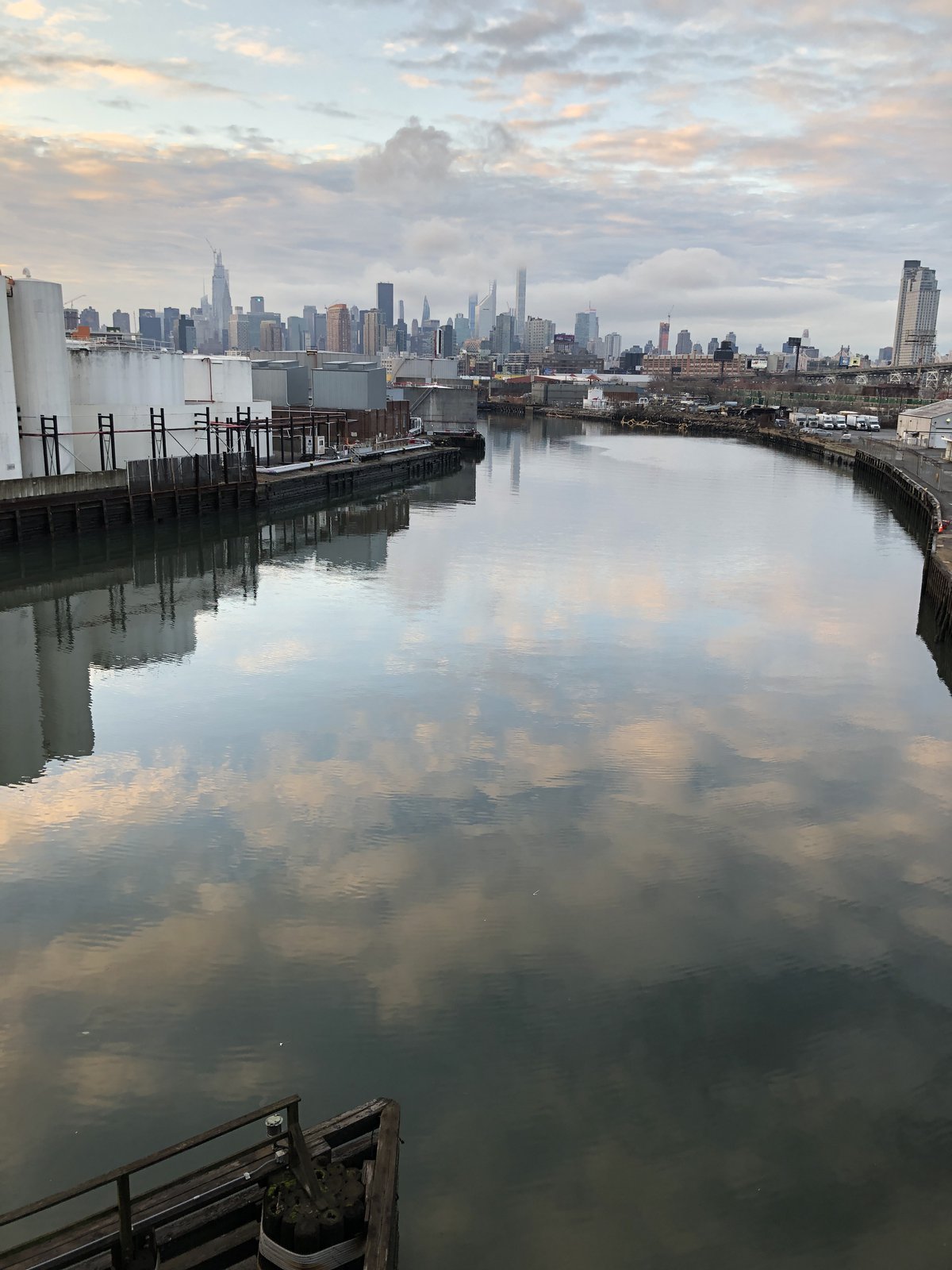Forgotten in Plain Sight: Bringing Renewed Attention to a Famous New York City Waterway

(Photo Courtesy: Marie Lorenz)
A boat ride down Newtown Creek in New York City reveals a story of a polluted past. On either side are industrial worksites and oil refineries, in front of you is the iconic Manhattan skyline, and beneath you is one of the most contaminated waterways in the United States. Newtown Creek is a 3.5-mile estuary and long tributary of the East River that forms part of the border between the boroughs of Brooklyn and Queens.
What was once a fresh water stream-fed creek, became a dumping ground for industrial byproducts and toxins in 19th and 20th centuries, perhaps most famously noted by an oil spill in 1950 that was not discovered until the late-1970s. That disaster released between 17 and 30 million gallons of oil and petroleum product into the soil and creek. Today, organizations like the Newtown Creek Alliance are working on projects to address remediation, restoration and revitalization of the historic waterway. Already, blue crabs and fish have returned to the waters, and wetland plants are taking over abandoned sediment piles along the creek’s banks.

The new floating opera, Newtown Odyssey, will physically connect audiences to themes of climate change, environmental justice and civic responsibility. (Photo Courtesy: Marie Lorenz)
Newtown Creek and its story of recovery is the subject of author and associate professor of English Dana Spiotta’s latest creative project. She is collaborating with composer Kurt Rohde and artist Marie Lorenz to produce a floating performance piece taking up the subjects of climate change, environmental justice and civic responsibility. Spiotta and her colleagues recently received a Creative Capital Award to fund their project. Creative Capital is a nonprofit organization that supports innovative and adventurous artists across the country through funding, counsel, gatherings and career development services. Their project is one of 35 out of over 4,000 submissions nationwide to be selected for the award, which provides $50,000 toward work on their project.
According to Spiotta, Newtown Odyssey presents a non-traditional opera heard amid sounds of the surrounding traffic and industry. Performers sing aboard moveable and floating stages, and the audience will pass by in boats, connecting them physically to the opera’s themes.
“Newtown Creek is one of the most polluted waterways in New York City, but somehow still quite beautiful,” says Spiotta. “We are interested in what is forgotten in plain sight in a city. By staging a live show, we are interrogating who has access to our waterways and for what. We are all interested in secret histories, and we see this waterway as an evocative palimpsest of the city, where each layer of the creek’s past tells a story.”

Dana Spiotta
For Spiotta and Lorenz, this is not their first time creatively exploring a “forgotten waterway,” as the pair embarked on a previous adventure where they traveled along part of the Erie Canal using a row boat. Spiotta wrote about that experience in New York Times Magazine and Lorenz documented it for her art project, The Tide and Current Taxi.
For the production of Newtown Odyssey, Spiotta will be writing the narrative, the libretto (opera’s text) and the story; Rohde will compose the score and Lorenz will direct and design the show.
While the project is in the beginning stages, Spiotta expects that Newtown Odyssey will host its first live audience in 2022. She hopes that people who attend the performance will walk away with an appreciation of Newtown Creek’s resilience and beauty despite centuries of industrial contamination, and a motivation to engage in efforts for a cleaner future.

